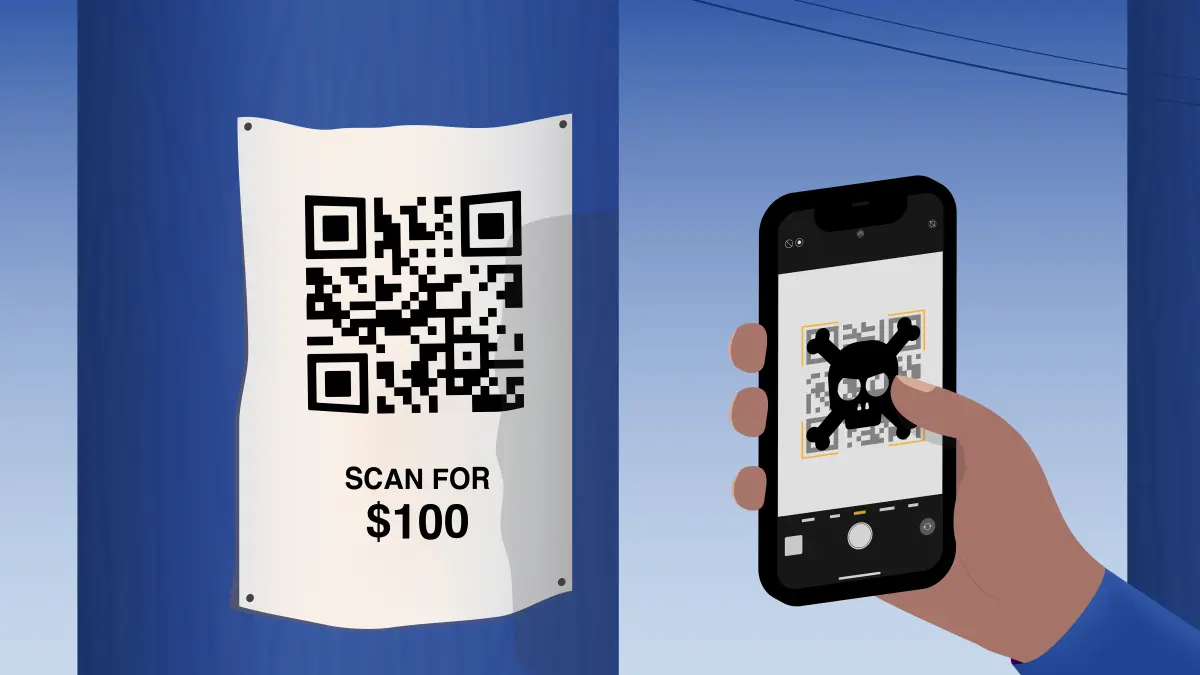QR Code Scams: How to Protect Yourself
You scanned the QR code. It promised a discount, a free Wi-Fi connection, or a link to a free e-book. But now you're here, reading this blog post. Good. You're already taking a step towards protecting yourself. QR codes, while convenient, have become a new playground for scammers. They're easy to manipulate, and the hidden URL they contain can lead you to malicious websites or initiate unwanted actions.
So, how can you stay safe in the face of these sneaky scams? Let's break it down:
The Problem with QR Codes
QR codes are simply visual representations of data, most often a URL. You can't tell where that URL leads just by looking at the code. This makes them perfect for phishing and other malicious activities. A scammer can easily replace a legitimate QR code with a fake one, or even create their own.

Common QR Code Scams
- Malicious Websites: The QR code might direct you to a website that looks legitimate but is designed to steal your personal information, like login credentials, credit card details, or even install malware on your device.
- Phishing: Similar to malicious websites, the linked page could be a phishing attempt, mimicking a trusted site like your bank or social media platform to trick you into entering your information.
- Fake Discounts and Promotions: That tempting discount or free offer might be a trap. Scanning the code could lead you to a fake website or subscribe you to unwanted services, costing you money.
- Payment Scams: Scammers are now using QR codes to trick people into making fraudulent payments. They might replace the QR code for a legitimate vendor with their own, diverting your money to their account.
- Contactless Attacks: In some more sophisticated attacks, scanning a malicious QR code could add a fake contact to your phone, which could then be used for further scams.
How to Protect Yourself
- Be Skeptical: Don't scan QR codes from unknown or untrusted sources. Be especially wary of QR codes in public places, like posters or stickers, as these are easy to tamper with.
- Verify the Source: If a QR code is associated with a business or event, try to verify its legitimacy through other means, like the official website or phone number.
- Use a QR Code Scanner with Security Features: Some QR code scanner apps offer built-in security features, like URL preview and malware detection. These can help you identify potentially dangerous codes before you visit the linked website.
- Check the URL (If Possible): If your scanner allows it, take a look at the URL before visiting the site. Look for anything suspicious, like misspellings, unusual domain names, or shortened URLs (like the one I used to bring you here!). URL shorteners can hide the true destination of the link. While convenient, they add a layer of obscurity that scammers exploit. That's why you should be extra cautious when encountering them.
- Don't Automatically Trust: Even if the QR code seems legitimate, don't automatically trust the website it leads to. Be cautious about entering any personal information, especially passwords or financial details.
- Keep Your Software Updated: Make sure your phone's operating system and security software are up to date. This will help protect you from known vulnerabilities.
- Think Before You Scan: The most important thing is to be mindful and think before you scan. Ask yourself if the QR code is from a trusted source and if the offer seems too good to be true.
In Conclusion
QR codes offer a world of convenience, but as we've seen, they also come with risks. By staying informed, being skeptical, and following the tips outlined in this post, you can confidently navigate the world of QR codes without falling victim to scams. Remember, your vigilance is your best defense. Stay safe out there, and don't hesitate to share this important information with your friends and family – their safety matters too.
Never Miss a Blog
It's free! Get notified instantly whenever a new post drops. Stay updated, stay ahead.
Related Posts
How to Score a 10/10 Baddie?
Unlock your potential and become the best version of yourself. Explore actionable steps for self-improvement, personal growth, well-being, and finding purpose in your life.
30 Apr 2025
How to Make OpenAI API Calls in Your JavaScript Application
Step-by-step guide to making OpenAI API calls in your JavaScript app using the openai-api-helper npm package. Learn how to integrate OpenAI's capabilities into your project with ease.
22 Jul 2024
What Inspired Me to Create DeepFind.Me (And How You Can Figure Out What to Build)
In this post, I share the inspiration behind building DeepFind.Me, an OSINT-powered platform to help people understand their digital footprint. I also break down a practical framework for developers and makers to come up with impactful project ideas; even if they feel stuck or uninspired.
20 May 2025